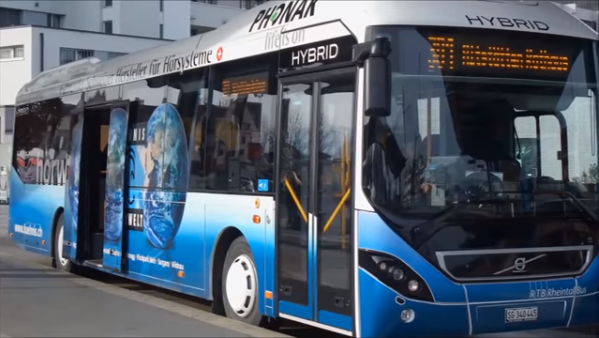It’s been nearly a year since London city council approved a $560-million bus rapid transit plan, but for many downtown businesses, there remain more questions than answers.

The growing number of businesses opposed to the plan, which now totals at least 15 merchants, have started Down Shift, a grassroots organization representing taxpayers, concerned citizens, neighbourhood associations and local business owners. Down Shift is a play on the name given to the rapid transit plan, Shift.
Among their many concerns include the uncertainty surrounding the proposed route along King Street and disruption to business access along Richmond Street during construction.
Putting a rapid transit route on King Street addressed a problem discovered by officials earlier this year; that Dundas Street in the core and in Old East Village may be too narrow for a single dedicated transit lane, without sacrificing curbside parking.
“We just recently found out that the east-west route is currently slated for King Street, with only one lane of traffic going east, two lanes of rapid transit buses, no parking, and no loading zones,” said Jill Wilcox of Jill’s Table on King Street.
“The big concerns I have there, the loading zones in particular are critical for Covent Garden Market, they have over 50 vendors there.”
Officials’ proposal to address that is to move the loading zone to a space behind the market called “the Lane.”
“(The Lane) is plugged most days as it’s just a very difficult and tight place, especially for tractor trailers and large delivery vehicles, so we think it will seriously impede our ability to be able to do our business,” said Bob Usher of the Covent Garden Market.
READ MORE: Plans for London’s Bus Rapid Transit are coming into focus
Other concerns reach beyond the businesses along King Street, including what some say is overall poor communication of the proposed rapid transit plans.
“It’s amazing how many people are not aware of these plans,” said Steve Harris of Harris Funeral Home, located on St James Street at Richmond Street.
“When I mention rapid transit to people, even today at another meeting, folks were saying, ‘is this about high speed rail to Toronto?’ It’s amazing how many people are not aware of this.”
Bob DiFruscia of Bertoldi’s Trattoria agrees.
“I think the biggest problem is that there are a lot of people who don’t even know what’s going on. There’s been no plebiscite, they’ve done no research whatsoever,” said DiFruscia.
“When you look at what they’re going to do on Richmond Street, it will be totally ripped up for what I imagine will be two years if they continue with this tunnel idea … I don’t know if I would stay and go through it, because truthfully, there’s no one on Richmond Street who will make money during that time, it will be virtually impossible.”
That sentiment was also expressed by the owner of Lifestyle Women’s Wear at the corner of Richmond Street and Hyman Street.
“During the construction phase, which could be years, these businesses are going to be forced, probably to relocate or try to make a go of it, and then gone because of lack of traffic,” said Steve Lahman.
“You just have to look at Hyde Park to see the city effect there; most of the businesses that were there are now gone.”
The two most recent meetings of the Rapid Transit Implementation Group have revealed some key streets that would house rapid transit buses — including Dundas Street, Richmond Street, King Street and Wellington Street — may not be wide enough for buses without eliminating parking, trees, or expropriating land.
In a release, Down Shift says huge expropriation costs to buy land for the system would have to be paid by London taxpayers, and not with provincial or federal support. The group is also expressing concerns that little to no information is available to support assumptions of increased ridership that are required to make rapid transit viable.
Legal concerns were also raised as Down Shift pointed out that cities, such as Kitchener-Waterloo, are now absorbing large legal costs due to lawsuits by business owners who have gone bankrupt during construction.
“The process appears to be a ‘top-down’ process, from City Hall down to the rest of us. Most of the plans have already been formulated and last-minute consultation appears to be window dressing,” said Down Shift in a release.
Many of London’s downtown businesses, which include retailers, restaurants, the Covent Garden Market, and other services, say they will bring their concerns to a public meeting at the Central Library on Thursday from 5 p.m. to 8 p.m.
The rapid transit plan is the biggest project in London’s history. The $560-million price tag will mostly be covered by the federal and provincial governments. But London ratepayers will foot $130 million of the bill.








Comments